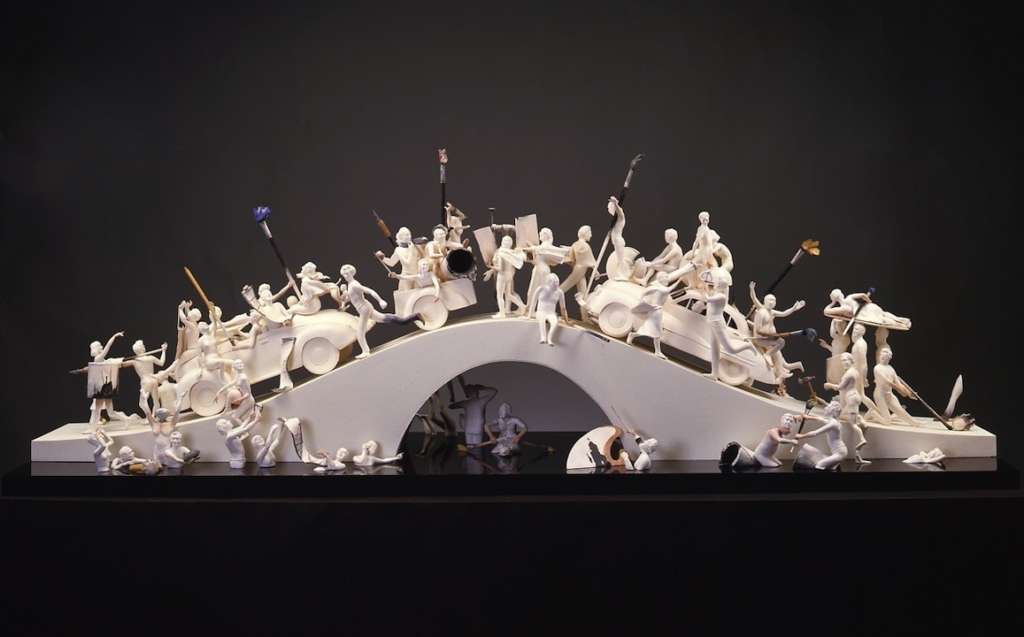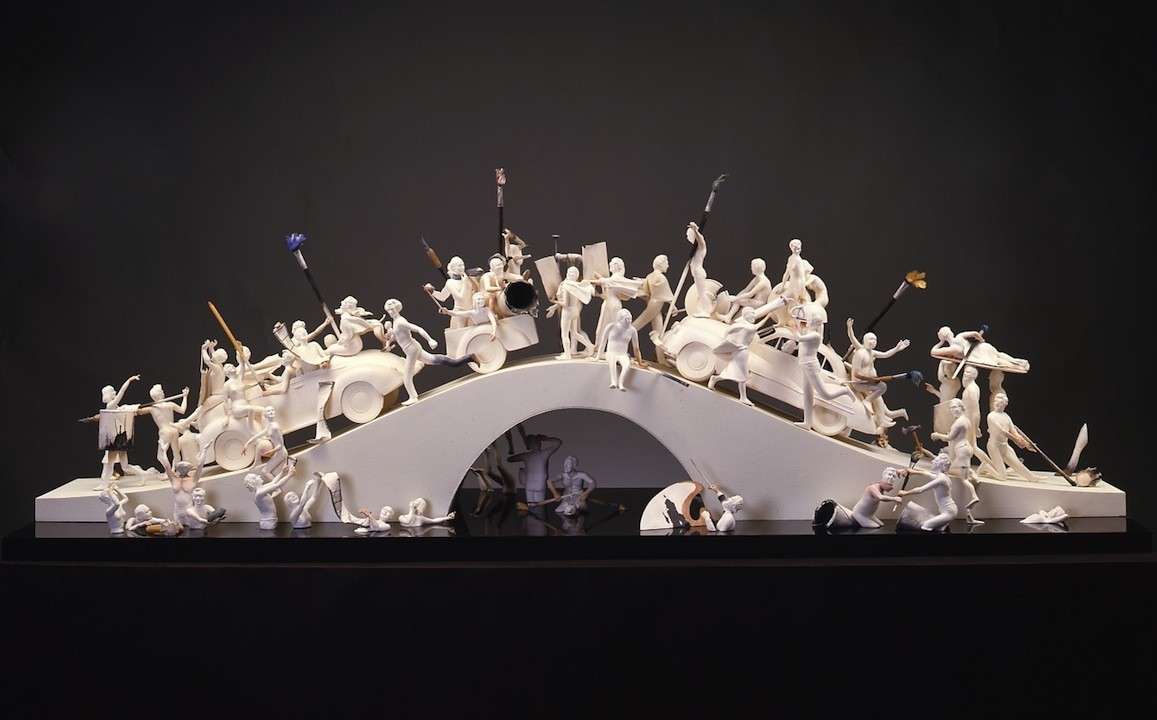Pictured: Patti Warashina, A Procession, 1986. Low-fire clay, underglaze, glaze, mixed media, 48 x 120 x 36 inches. Photo by Roger Schreiber.
Hi, my name is Keila Medina, and I am this summer’s Getty Marrow intern at AMOCA! I currently attend Otis College of Art and Design, majoring in product design and minoring in contemporary clay.
In 1940 in Spokane, Washington, Patti Warashina was born. She has been an essential part of bringing more attention to the ceramic scene in Seattle by taking inspiration from the Bay Area Funk Movement and adding her own twist.
In the aftermath of WWII, Japanese people were heavily discriminated against. Many were forced to live in internment camps due to the fear that they would act as spies and aid the Japanese government. Over 120,000 Japanese Americans from the West Coast, most of which were legal residents or citizens, were kept there for up to 4 years. Fortunately, Warashina’s family was part of the few that were not taken into the camps. Still, they were unable to live normally as the hysteria spread. They were still confined within city limits and had a curfew. “It made a big impression on me since before that time, I felt a repression of my culture in public because of political circumstances and the lack of its availability in Spokane.” Her parents tried to make themselves become more “American” in order to fit in, abandoning their cultural practices and traditions. Her parents pushed her and her siblings to get a traditional career in which they could sustain themselves.
Unlike most artists, Warashina did not start becoming interested in the arts until she was older. Since her parents pushed her to study academic courses, such as science and math, art was left at the back of her mind. Especially coming from a small town, there wasn’t a big emphasis on the arts. One day she went to her friend’s house after class, where she saw her friend’s mother’s easel in the living room, and she recalls that as the first time she realized what an artist could be.
After graduating high school, she enrolled at the University of Washington to become a dental hygienist. To complete her course requirements, she registered for beginning drawing; at first, she was hesitant since she didn’t take any art courses in high school. However, she quickly fell in love with the material and the wheel, so she enrolled in more art courses. She still had in mind becoming a dental hygienist until she ultimately decided to transfer over to ceramics.
Warashina began hand-building and creating functional pots and later shifted to more figurative work. Several surrealist artists caught her eye, including a number from the Funk Movement from the Bay Area, so she began implementing this in her work. It wasn’t until after she finished school that she began to play more with figurative work. Warashina constantly pushed against the limitations of clay. She depicted many of her figures running or in motion to counteract the restriction of gravity. She also tried to achieve the brightest colors and tried to add as much expression as she could. After working on smaller figures, she needed a new challenge. She created four-foot figures that later turned into twelve-foot figures and now is starting to work her way back down.
Warashina’s work started off as very whimsical and playful but has slowly turned into more commentary on contemporary issues, sometimes subliminally taking inspiration from her Japanese background. Her work, often humorous, brings the viewer’s attention in inviting them to look at the bigger picture.
If you would like to read more about the artist check out:
To learn more about internment camps, check out:
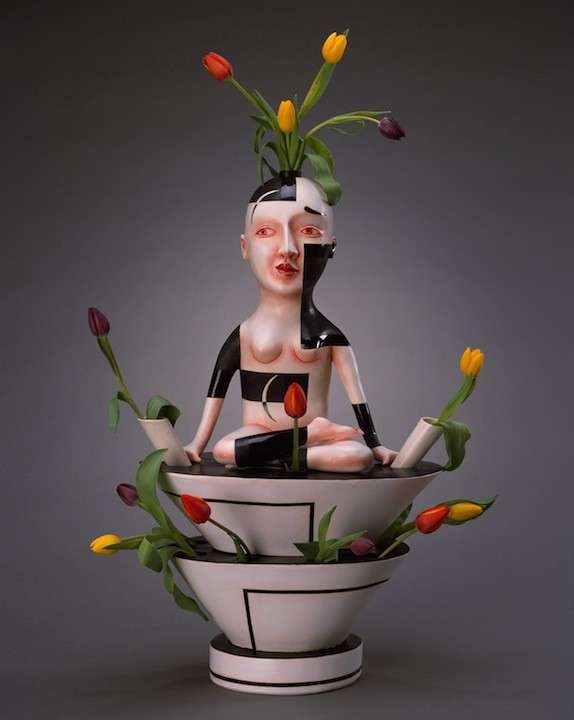
Patti Warashina, Vaso dei Fiori (detail). Low-fire clay, underglaze, glaze, mixed media, 31 x 18 x 10 inches. Photograph by Rob Vinnedge. 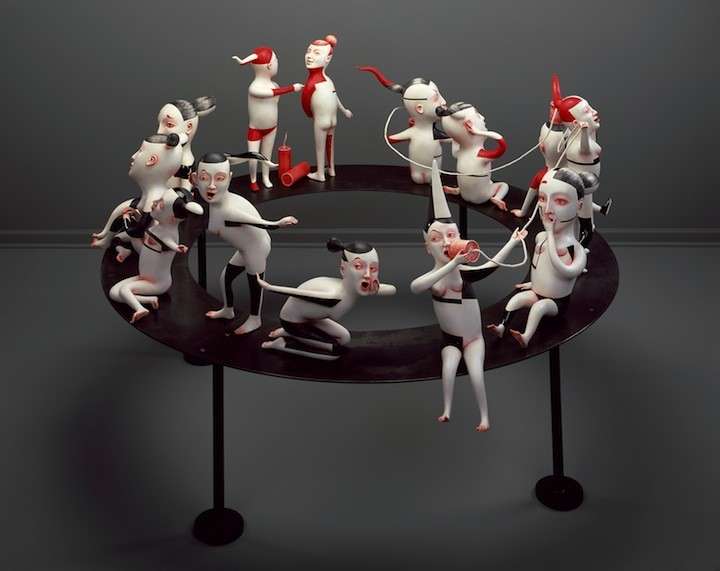
Patti Warashina, Gossipmongers (detail #2), 2010. Low-fire clay, underglaze, glaze, mixed media, 25 x 84 x 84 inches (24 inch stand). Photograph by Rob Vinnedge.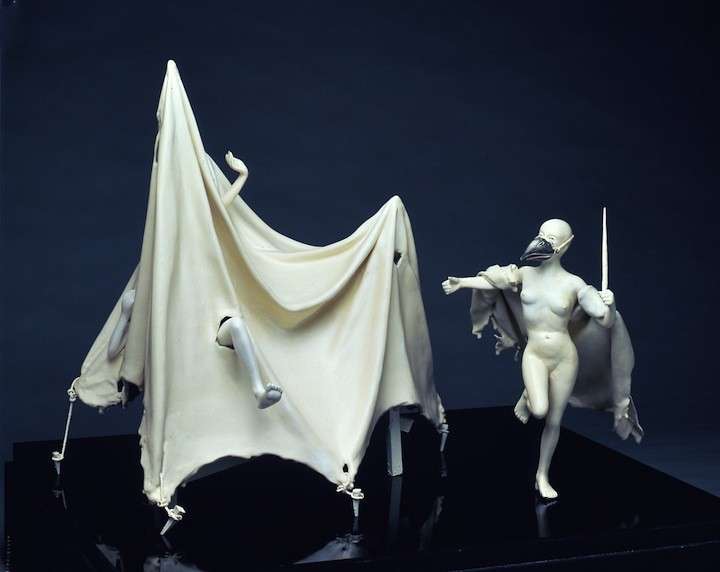
Patti Warashina, A Cry For Help, 1982. Low-fire clay, underglaze, glaze, mixed media, 23 x 24 x 20 inches. Photograph by Roger Schreiber. 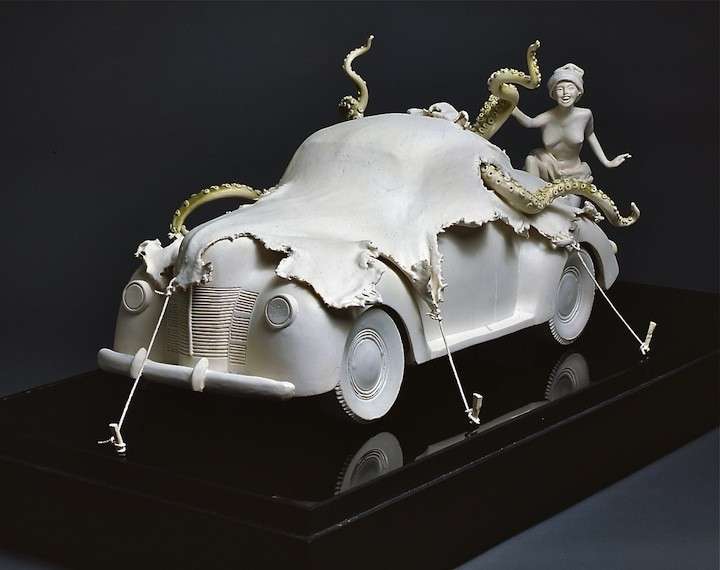
Patti Warashina, Octopus Car, 1979. Low-fire clay, underglaze, glaze, mixed media, 20.5 x 40.5 x 19.5 inches. Photograph courtesy of the artist. 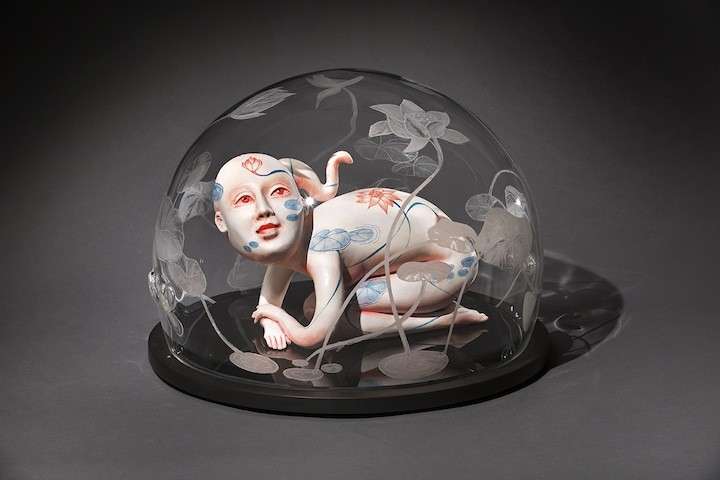
Patti Warashina, Beneath the Lotus, 2014. Low-fire clay, underglaze, glaze, glass, mixed media, 14 x 20 x 20 inches. Photograph by Russell Johnson. 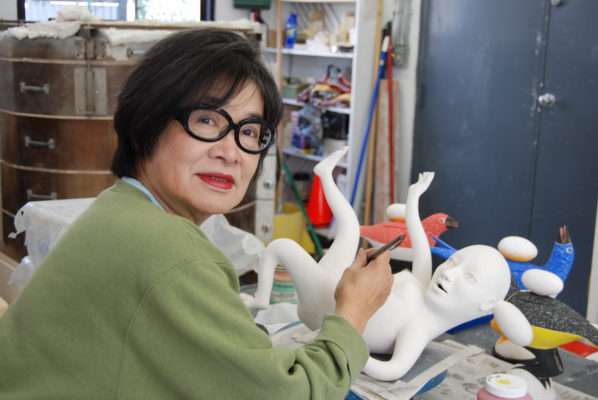
Patti Warashina in her studio. Photograph by Jill Harris.
Keila Medina is completing her studies at Otis College of Art and Design and a 2021 Getty Marrow Undergraduate Intern at AMOCA. During her internship, Medina writes periodically for AMOCMA.org, and posts on Instagram and Facebook on Thursdays. Read her blog posts:
